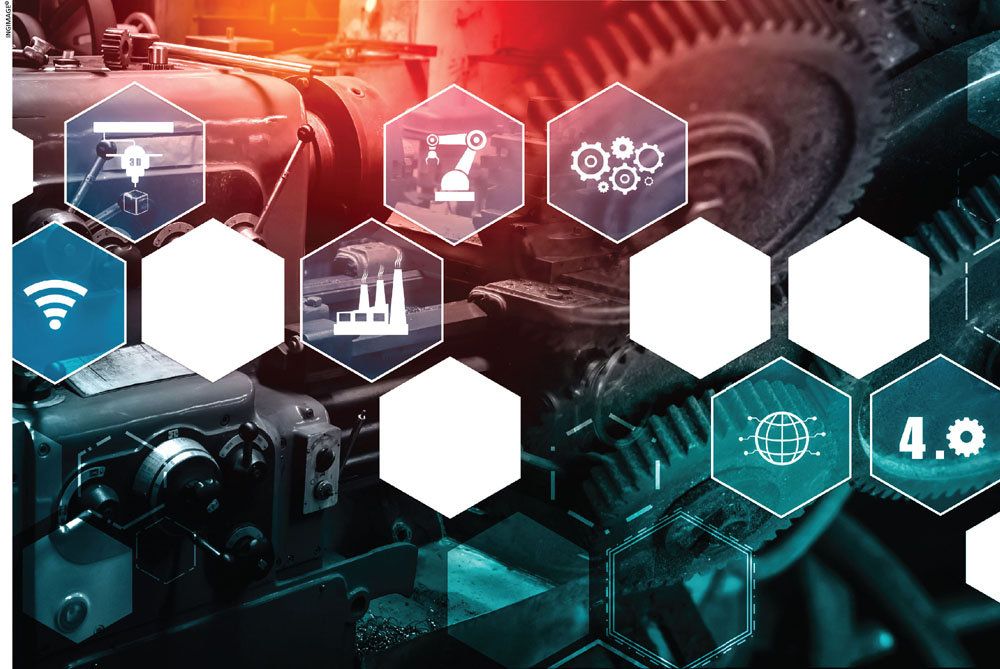THE SUPPLY CHAIN

STRENGTHENING THE LINKS
Ensuring continuous global supply amid inevitable turbulence and uncertainty – Merilee Kern
With considerable disruptions brought on by COVID-19 and escalating inflation, supply chain resilience is more critical than ever before. The unforeseen pandemic has presented a range of challenges that many supply chains were clearly unprepared for.
Labour shortages, shipping cost surges, new patterns of production and consumption have all played key roles in disrupting business logistics, upending markets, industries and whole economies in the process.
In its wake are logistics, procurement and other supply chain professionals who continue to suffer stress and chaos on the front line, as they scramble to react to newly exposed systemic weaknesses and vulnerabilities.
President and CEO of Bristlecone Nirav Patel urges: “In order to prepare against unforeseen and inevitable turbulent events ahead, it’s important to take proactive measures to identify the most inherently fragile areas within a supply chain.” Bristlecone is a leading provider of connected logistics solutions and part of the Mahindra Group, which is valued at US$ 19 billion.
He adds: “In this post-pandemic era, we need to challenge conventional thinking and pursue digital innovation on a much larger and more significant scale. Embracing emerging technologies such as AI and SAP integration can transform and fortify companies with an appropriate level of resilience and agility, to defend against future crises and unforeseen challenges.”
COMMON RISKS While there are numerous reasons why supply chains are disrupted, there are a few main culprits.
External factors such as natural disasters, economic turmoil and geopolitical instability impact supply chain performance in many unsavoury ways, such as damaged transport infrastructure, cancelled deliveries and demolished inventory – all of which can lead to unbalanced supply and demand.
Issues within the value chain (the process that begins with a business receiving raw materials and then selling the finished product to consumers) could create a bullwhip effect where small fluctuations in initial operations can lead to even greater negative effects across the entire supply chain. Value chain triggers include labour disputes, limited supplier cash flow, manufacturing accidents and so on.
When troubles arise internally in key areas of a business such as breaches in the finance, IT or HR divisions, core operations will struggle to function and that will impede the company at large.
DIGITAL REPLICAS Since supply chain threats such as these remain omnipresent with regional, national and global implications, it has become an imperative for organisations to employ digital tools for enhanced automation, visibility and resiliency.
Here are three digital strategies that leaders can implement.
Digital twins are digital replicas of physical supply chains. They integrate with a company’s systems to provide real-time insights on any sudden disruptions in a supply chain’s performance level and enable supply chain management to be more proactive than reactive.
These replicas also help companies mitigate environmental risks by immediately notifying them of natural disasters or other external forces that can harm supply chains’ efficiency.
This simulation provides an additional level of visibility that would otherwise be impossible without leveraging technology.
Predictive maintenance is a preventative technique that uses machine learning (ML) technologies and sensors to track how machines and systems are functioning.
It’s able to foresee when a machine is likely to develop issues in the near future so that maintenance can be done before any breakdown occurs.
Supply chain operations become more resilient knowing that all machines and robotics are working efficiently.
Today’s supply chain management companies live in a fortunate time where they can collect real-time updates on current events courtesy of the Internet and other technologies. Organisations can leverage social media to obtain consumer behaviour analytics while monitoring the industry, news and other sources that can indicate potential supply chain disruptions such as new regulations.
Logistics and transportation technologies provide powerful modern digital fleet tracking so that companies can track their shipments and fleets across land and sea, and around the world.
Analytics from cloud-based and other technologies can quantify and provide valuable insights on issues such as employee engagement and productivity. This data is direct feedback that supply chain managers can leverage to assess what leadership tactics are effective and which are failing to drive workforce benchmarks.
Mitigating avoidable business risks by proactively transforming and shoring up supply chains with digital technologies and methodologies is a trend that’s expected to continue over the next few years.
Gartner predicts that “by 2026, more than 75 percent of commercial supply chain management application vendors will deliver embedded advanced analytics (AA), artificial intelligence (AI) and data science.”
And a McKinsey survey notes that more than 90 percent of respondents claimed they have invested in digital supply chain technologies in the last year.
Digital transformation is already reinventing the modern supply chain across sectors as technologies such as AI, ML, IoT and blockchain integration grow.
These next gen digital deployments are offering innovative ways for supply chain professionals to procure highly accurate, up-to-the-minute data. It will enable companies to predict and aptly react to macro and micro conditions, mitigate risks and at the most extreme level, thwart a business busting disaster.
Patel says: “Supply chains are complex and disruption is becoming the norm. Businesses must be able to operate seamlessly within their ecosystem of functional teams, partners, logistics providers, customers and other stakeholders, and work together to navigate and mitigate supply chain risks – all while improving the customer experience.”
“Establishing multi-tiered digitalisation replete with data aggregation, information exchange, collaboration, risk management, AI-powered analytics and robust cloud technologies can shore up a supply chain with unprecedented speed, visibility, synergy and control,” he adds, noting: “It’s a mission critical way to maintain the kind of resiliency that will demonstrate and protect business value.”





Leave a comment